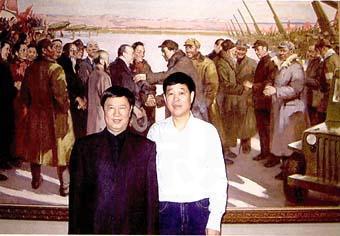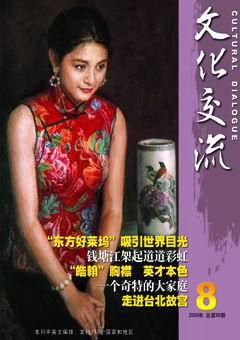Collector of Rare Treasures
Fu Tongxian


Everyone who views the private collection of Tong Sihe, the president of Xuefeng Group of Yiwu, would feel amazed by the great treasure. The collection consists of a large quantity of oil paintings by artists of Russian and Soviet Union and major Chinese oil painters. Jin Shangyi, the former president of Chinese Artists Association, has come to view the collection several times and has commented that Tongs collection is a perfect example for private collectors.
Tong Sihe has spent more than 20 years building up his private collection. In the early 1980s he became acquainted with artists such as Wang Bomin, Wu Shanming, Tong Zhongtao, Wu Yongliang, Quan Shanshi and Pan Honghai. The friendship with the artists grew and Tong began to collect artworks.
In 1993, he set up Xuefeng Group of Yiwu, a business giant mainly specialized in construction. Over years it has grown and has built quite a few landmark building projects in both Yiwu and Hangzhou. The projects have won the group quite a few industrial honors.
Tong has grown into a veteran collector over years. Nowadays, he has 12 bookshelves of reference books. Diligent studies and dedication have made him knowledgeable and helped him make right decisions at auctions. He bought a painting which Huang Binhong painted at the age of 86. Bidding for the painting had failed because bidders failed to appreciate its value. Now, many collectors regard this painting as one of the collectors best items. A painting by Lu Yanshao was belittled by some collectors. Tong bought the painting on the strength of his research conclusion that the artist had created it in celebration of his mothers 70th birthday. Other collectors began to see the values of these paintings only after Tong bought them. Tongs collection has many masterpieces by famous artists such as Wu Changshuo, Zhang Daqian, Li Keran, Huang Binhong, and Cheng Shifa.
Tong began to build a special collection of Russian and Soviet Union oil paintings after he made friends with Quan Shanshi, an oil painting professor with China Academy of Art in Hangzhou. Quan Shanshi studied oil painting in the Soviet Union in the 1950s and he studied under the guidance of Melnikov, a brilliant artist. In 2006, Tong Sihe and Quan Shanshi flew to Moscow and met with Melnikov. Melnikov had worked in China and done some sketching in Hangzhou. Tong Sihe was surprised to see an oil sketching Melnikov had drawn about the railway station of Hangzhou. The artist sold more than 40 paintings to Tong. With the help of Melnikov, Tong also contacted some other Russian artists and bought some oil paintings. One of the precious Russian oil paintings was a portrait of woman created by Nicolai Fechin (1881-1955). A friend of Tong Sihe in the United States contacted the granddaughter of the oil painting master and then drove three days to reach her and bought the portrait.
Tongs collection of Chinese oil paintings includes masterpieces of nearly all Chinese oil painters. In 2005, a painting gathering was held in China Art Gallery. Dozens of Chinese oil painters attended the gathering and painted portraits of some famed Chinese entrepreneurs present. Tong bought all the portraits created for the occasion.
Tong is also an enthusiastic bidder at overseas auctions, for he tries to buy back overseas Chinese treasures. He has bought a few from auctions in Japan and the United States. As “He” in his name suggests crane in Chinese, he has anatural liking for cranes. Some antiques in his collections have crane images. He bought four 2.4-meter-tall cloisonné cranes at an American auction. The four cloisonné cranes used to decorate the royal palace in Beijing. Also in his collection is a smaller cloisonné crane. He purchased it for 50,000 US dollars. The seller later regretted and made an extremely high offer to buy it back. Tong declined, saying that he did not want the crane to fly away again.
Tongs collection of oil paintings is now at the Xuefeng Gallery in Xufeng Tower. The modernized gallery spends one million a year maintaining the constant temperature and humidity at the gallery and keeping the gallery in good shape. The gallery opens to the general public every year, but without a fixed schedule. Visitors include oil painters, enthusiasts, and primary and middle school students.
The Chinese paintings and artworks of the royal houses in Tongs collections are also well preserved. Tong says that he is just a collector and keeper of treasures on the behalf of the nation and society. He welcomes experts to view his collections for appreciation and research.□

